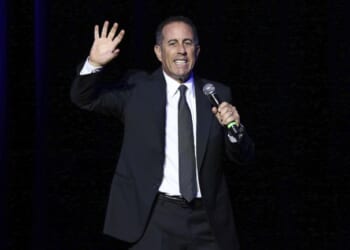
BALTIMORE (AP)—- It was almost instinctual for Ray Kelly to jump into action when he heard about a group of high school students clashing with police. He wanted to help protect the kids and de-escalate things, but instead, he watched his neighborhood burn.
Unrest broke out after Freddie Gray died from spinal injuries sustained during transport in a police van in April 2015. The protesters stormed through majority-Black west Baltimore, setting police cars ablaze and looting businesses. They were fighting the generations of oppression experienced by Black Americans, from racist housing policies and crumbling schools to limited job opportunities, rampant gun violence and poor living conditions.
A community activist from Gray’s neighborhood, Kelly had focused on police accountability for years. As federal investigators launched a probe into the Baltimore Police Department and local prosecutors charged the officers involved, he doubled down in calling for stronger oversight at a time of growing national outrage over police brutality.
Ten years later, his ongoing efforts illustrate Baltimore’s progress – and lack thereof.
Among the positive changes, Kelly said, there are more mechanisms to address police misconduct and hold officers accountable. Homicides and shootings are trending downward after a prolonged surge that began in the wake of Gray’s death. And while west Baltimore still faces widespread poverty and neglect, he said, at least elected officials are paying more attention.
“People have to hear us out, because there is now this possibility that we can organize and elevate our voices,” Kelly said. “I think Freddie Gray’s death put that in motion.”
But progress is often painfully slow and woefully insufficient. Meanwhile city leaders face new obstacles from the Trump administration’s escalating attacks on civil rights and diversity initiatives.
For Gray’s family, a decade has passed since their private loss played out on national news.
Joined by the mayor and other dignitaries Saturday morning, his twin sister Fredricka laid a wreath of flowers near the site of his arrest, marking the anniversary of when he died in the hospital.
“It’s still justice for Freddie Gray,” she said, repeating what became a rallying cry in 2015. “Ten years now.”
Baltimore has a long history of mistreating its Black residents. In 1910, city leaders enacted the country’s first residential segregation ordinance restricting African American homeowners to certain blocks.
Kelly grew up during the height of the crack cocaine epidemic of the 1980s and the national war on drugs, when police routinely conducted “street sweeps” or mass arrests in west Baltimore. When he started selling drugs to support himself during high school, the police were just another obstacle in an already uphill battle. He later struggled with addiction and served time in prison.
After coming home in the early 2000s, Kelly started working with a neighborhood advocacy group to improve public safety. That put him in a unique position when the U.S. Department of Justice launched its probe of city police: Knowing residents would be wary about cooperating with federal investigators, Kelly helped make introductions and encouraged people to participate.
“It was a gamble,” he said. “It wasn’t really what this community does.”
But the gamble paid off. The investigation uncovered longstanding patterns of excessive force, unlawful arrests and discriminatory policing practices, especially against Black people.
The findings resulted in a 2017 consent decree mandating a series of reforms for the department, which promised to overhaul its policies and training.
Since then, progress is inching along.
The agency celebrated a milestone this week when a federal judge terminated two of the consent decree’s 17 sections after finding full and sustained compliance – including with rules for transporting people in police vans. Gray was handcuffed, shackled and transported without a seatbelt as officers repeatedly ignored his calls for medical attention.
Department leaders say large-scale change is happening, though not overnight. Officers have increased foot patrols, decreased low-level arrests and even undergone training on emotional regulation. They’re less likely to use force when taking people into custody, and they’ve contributed to historic reductions in homicides by partnering with service providers to address the root causes of gun violence.
Police Commissioner Richard Worley said that over the course of his career, he’s watched the culture of policing shift from “warriors to guardians.”
Nonetheless, many Baltimore residents still don’t trust the police to act with compassion and integrity. They don’t believe the department has undergone a significant cultural change.
“It’s going to take years and years to redefine the police department in the eyes of the community,” U.S. District Judge James Bredar said during Thursday’s consent decree hearing. “This work is critical, even if it doesn’t bear fruit immediately.”
Gray, 25, was arrested near his home in west Baltimore’s Sandtown-Winchester neighborhood, a once-thriving community that had fallen into disrepair.
In its heyday, nearby Pennsylvania Avenue was a Black entertainment district with renowned jazz clubs, upscale shops and vibrant nightlife. Its cultural artifacts include the childhood home of Thurgood Marshall, the first African American appointed to the Supreme Court, and a bronze statue of jazz legend Billie Holiday, who also had roots in west Baltimore.
A confluence of factors contributed to its decline, including urban flight and chronic disinvestment. Some businesses left after unrest following the 1968 assassination of Martin Luther King Jr.
Open-air drug markets moved in, and over-policing became a common complaint from residents. So when Gray was violently taken into custody after making eye contact with officers and running away, that longstanding frustration boiled over. Officials responded to the 2015 protests by bringing in the Maryland National Guard and imposing a citywide curfew.
Many residents celebrated when prosecutors later announced criminal charges against the six officers involved, but none were convicted.
In the meantime, political leaders visited Sandtown and pledged to invest in housing, youth programs and more. Those big promises have largely failed to materialize.
“It’s still the same damn place with the same damn issues,” Kelly said, gazing down the street outside the former church rectory that houses his advocacy organization, the Citizens Policing Project. “We’ve heard a lot of talk, but this is what we see.”
When the city closed the neighborhood’s recreation center in 2021, Sandtown youth were basically left with nowhere to go, said 17-year-old Ryeheen Watson, whose childhood unfolded in the shadow of Gray’s death.
“It was like, nothing good comes for our community,” he said. “But when you’re starting as an underdog, there’s nowhere to go but up.”
The second Trump administration will likely create even more challenges for communities like Sandtown as the White House slashes federal initiatives aimed at advancing racial equity.
Baltimore attorney Billy Murphy, who represented the Gray family, said that while Black people continue fighting for their collective future, a resurgence of white supremacism is infecting national politics.
“Where are we today? That’s where we are,” Murphy said at a recent event commemorating Gray’s death. “We are heading backwards.”
But at least on the local level, political discourse now includes more progressive Black voices, said Dayvon Love, director of public policy for the grassroots think tank Leaders of a Beautiful Struggle. In his view, Gray’s death was a turning point.
“That has advanced our ability to advocate unapologetically for Black people in ways that before the uprising were shut out,” Love said.
Mayor Brandon Scott says his administration is achieving long-awaited progress by investing in historically neglected neighborhoods, including a $15 million plan to renovate Sandtown’s recreation center and upgrades to Gilmor Homes, the public housing complex where Gray was arrested.
However, Scott said in an interview, “We’re not celebrating here, because the work is not complete.”
For Kelly, discussions of politics and progress often miss the point by failing to acknowledge Gray himself, the young man from west Baltimore who died after a tragic encounter with police a decade ago.
Instead of marking the anniversary of his death, Kelly suggested, perhaps it’s his birthday that should be celebrated: Aug. 16, 1989.












